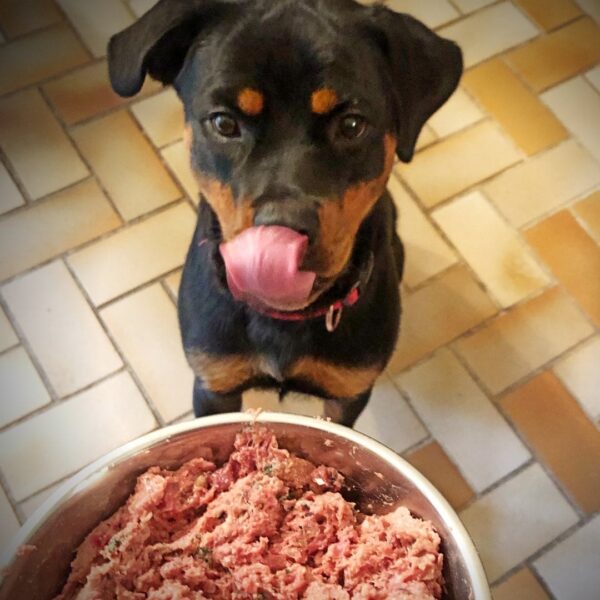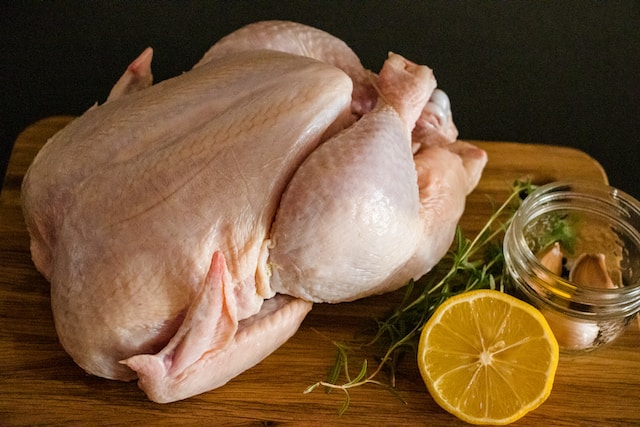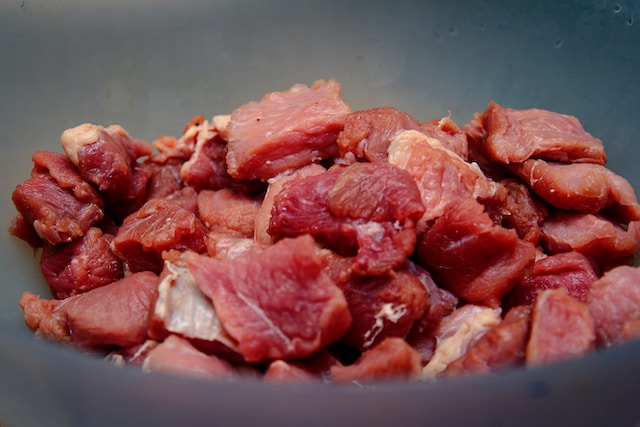With interest in canine health and nutrition higher than it’s ever been, more and more dog owners are switching their pets to a raw diet. The benefits are well worth the time and effort, even if it might seem scary at first. While there are many people out there that disagree with raw diets, we want to encourage you to get all the facts before falling for the scare tactics. If you’re reading this, you probably already know that big-bag pet foods can contain some very unfavorable ingredients. Learning more about raw diets will open up a new door of health and wellness for your dog.
#1 – Bones
For decades people have been told not to feed their dogs bones, especially chicken bones. While cooked bones are very dangerous and should be avoided, raw bones are actually quite soft. This makes them easy for your dog to break up and chew and they don’t splinter like cooked bones do. Raw bones are very safe for dogs to ingest. When feeding a raw diet, you’re going to want to focus on raw meaty bones – that is, bones that your dog can break up and chew (think drumsticks, chicken necks, etc). This is opposed to recreational bones, such as beef knuckles, that can’t be digested in a single meal. The type of bones your dog can chew in a sitting will depend on your dog’s size, age and health.
#2 – Balance Over Time
Many people are focused on creating the optimum meal every single time their dog eats. Commercial foods have long since advertised fully balanced meals, but when feeding a raw diet the goal is to balance nutrition over time. Think about the way you eat – do you eat a fully balanced meal with proper nutrients every single time you eat? Probably not. Instead, you focus on getting your nutritional needs across your diet as a whole. Supplements can be added if you think they’re needed, but many raw feeders don’t use any.
#3 – Food-Borne Illness
One of the biggest scare tactics against raw diets is food-borne illnesses. Yes, there is a chance that handling raw meat will pose a risk to you, but using basic food safety you should not have to worry about food-borne pathogens. Further, dogs have evolved to have very strong guts. This means they’re capable of digesting salmonella and other pathogens without getting sick at all. Think about animals in the wild – they are eating rotten meat quite often and don’t skip a beat!
#4 – All the Foods
The fun part about raw feeding is that you can feed pretty much anything your dog likes. You’ll want to feed raw meaty bones, muscle meat and organ meat. Some people include fruit and vegetables, but not everyone does. The more variety your dog has, assuming they can handle it without any allergies or other ill effects, the better. Consider varying protein between sources available to you such as chicken, turkey, beef, pork, duck and fish. If there’s something your dog really enjoys, feed it to them! You can also keep freeze dried raw mixers on hand to throw into your dog’s bowl, and not have to worry about shelf life or freezer space.
#5 – The Right Amount
How much you feed depends on a number of different factors. For adult dogs, the general rule is 2-3% of your dog’s body weight (or targeted body weight if your dog is over- or underweight). Puppies and pregnant and lactating females will need more, seniors will likely need less. You’ll also want to consider your dog’s breed (giant breed versus toy breed) to make sure you’re feeding the right amounts of nutrients. Without any math, though, you’ll just want to feed the amount of food that keeps your dog at a healthy weight!
As with any new diet, there is a learning curve when switching to raw. However, the benefits greatly outweigh the risks and your pup is likely not to experience more than an upset stomach from time to time. Once you’ve got everything worked out, you’re both going to experience a whole newfound love for dog food.
A Simple Way to Get Started
It’s understandable to feel overwhelmed when considering starting your dog on a raw diet. The good news is that by substituting any amount of raw food in your dog’s diet in place of their current food, you’ll be providing them with better nutrition, and making a small step in the right direction.
We Feed Raw is an excellent choice for pet parents looking to switch their dogs to raw food. All you have to do is answer some questions about your pet, and We Feed Raw will create meal plans that cater to your dog’s needs. This company offers raw dog food in several proteins, including chicken, beef, turkey, duck, lamb, and venison, all USDA-certified from farms in the U.S. and New Zealand. All We Feed Raw formulas are created by a Ph.D. animal nutritionist who has over 30 years of experience in the industry. The food is shipped to your door at no additional cost.
We Feed Raw is the healthiest way to feed your pet, easily shipped to you! Save 25% off now with subscription using code IHEARTDOGS25!

Best Raw Dog Food Delivery
If you’re not ready to prepare and make all your pooch’s food at home just yet, there are numerous at-home, delivery services, but choosing the right one for your dog can be tricky. Fortunately, we’ve put together a list of the Best Raw Dog Food companies for you.


 Toledo, United States.
Toledo, United States.